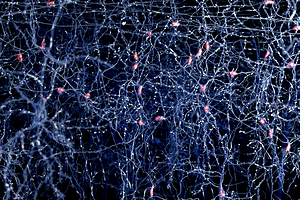Researchers develop new probes to record neural activity in brain
November 15, 2017
Source: medicaldevice-network
 643
643

Researchers at the Howard Hughes Medical Institute (HHMI) in the US have developed new silicone probes, Neuropixels, to simultaneously monitor the activity of multiple neurons from multiple brain regions.
The easy-to-use technology is intended to offer a precise understanding of the mechanism of nerve cells involved in behaviour and cognition.
In addition to HHMI, the $5.5m collaboration project was funded by the Allen Institute for Brain Science in the US, the Gatsby Charitable Foundation, and Wellcome in the UK.
The researchers have worked with Belgian international nanoelectronics research centre, imec, to develop and evaluate new devices for the detection of neural activity.
Neuropixels are implantable devices that can place numerous recording electrodes across a large span of the brain to enable collection of more meaningful data during a single experiment.
The probes can record multiple regions of the brain and are reported to have allowed recording from more than 700 neurons with the use of two probes.
The recording electrodes of the probes are densely packed to enable easy recognition of the cellular sources of brain activity and feature a nearly complete recording system, minimising hardware size, cost and removing several output wires.
Wellcome Neuroscience and Mental Health head Andrew Welchman said: “The history of computing shows how small silicon circuits can revolutionise how we tackle hard problems.
“Neuropixels probes will change what we know and even how we think about the brain.”
“Neuropixels probes will change what we know and even how we think about the brain.
“We still have a long way to go in uncovering the brain’s mysteries, but this new technology is an important development.”
More than 400 prototype Neuropixels probes are currently being tested at various research centres such as 20 labs affiliated with Gatsby and Wellcome, as well as eight HHMI labs.
The probes are expected to be available for research laboratories by mid-next year.
By DduRead more on
- Things to Know before Buying Newborn Baby Incubators March 31, 2022
- WiFi may interact with signaling pathways in the brain, causing irreversible damage May 20, 2019
- Highly Resistant Food Poisoning Bug Responds to Antibiotics September 6, 2018
- Smartphone Based Diagnosis to Identify Mosquitoes Transmitting Infection September 5, 2018
- 3 Natural Plant Extracts Manufacturers on Drugdu.com September 4, 2018
your submission has already been received.
OK
Subscribe
Please enter a valid Email address!
Submit
The most relevant industry news & insight will be sent to you every two weeks.



